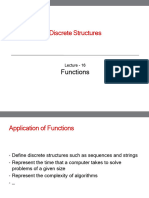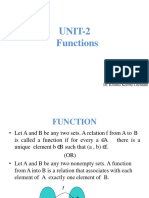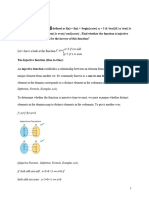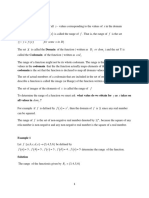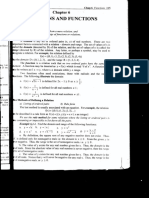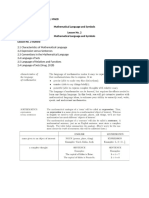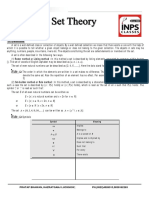0% found this document useful (0 votes)
25 views40 pagesChapter2 - Part2 - Functions
The document defines and discusses various types of functions including:
- One-to-one and onto functions
- Inverse functions
- Function composition
- Floor, ceiling, and factorial functions
It provides examples and explanations of how to determine if a function is one-to-one, onto, bijective, and how to find the inverse and composition of functions. Examples are given for floor, ceiling, and factorial functions.
Uploaded by
liasakinahCopyright
© © All Rights Reserved
We take content rights seriously. If you suspect this is your content, claim it here.
Available Formats
Download as PPTX, PDF, TXT or read online on Scribd
0% found this document useful (0 votes)
25 views40 pagesChapter2 - Part2 - Functions
The document defines and discusses various types of functions including:
- One-to-one and onto functions
- Inverse functions
- Function composition
- Floor, ceiling, and factorial functions
It provides examples and explanations of how to determine if a function is one-to-one, onto, bijective, and how to find the inverse and composition of functions. Examples are given for floor, ceiling, and factorial functions.
Uploaded by
liasakinahCopyright
© © All Rights Reserved
We take content rights seriously. If you suspect this is your content, claim it here.
Available Formats
Download as PPTX, PDF, TXT or read online on Scribd
/ 40















